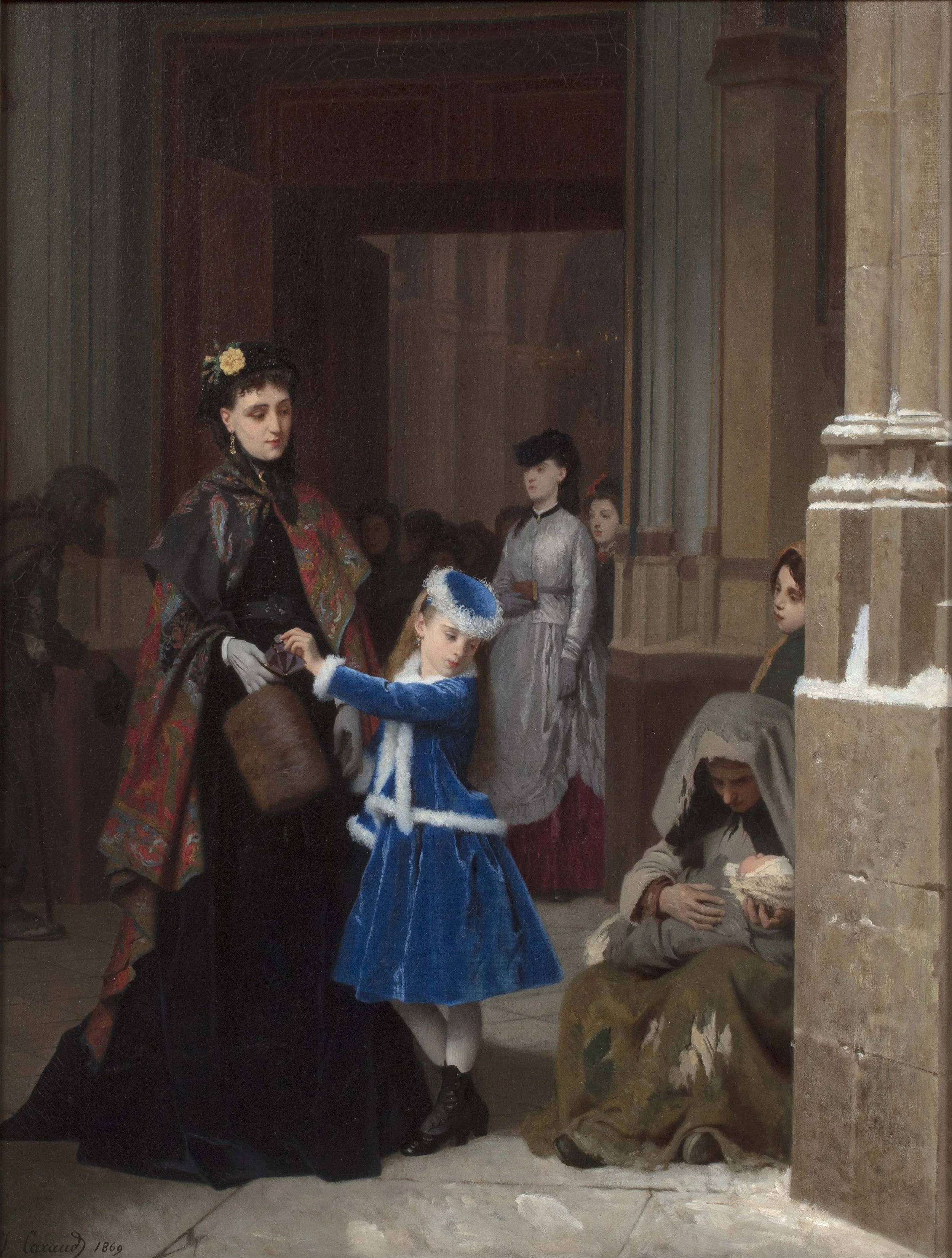JOSEPH CARAUD (Cluny 1821 - Lyon 1905)
The Alms Giver (L’ Aumône)
signed and dated J. Caraud 1869 in the lower left
oil on canvas
24 x 19 inches (61.5 x 49 cm.)
JOSEPH CARAUD AND THE CHANGING FACE OF PARIS
In the winter of 1869, Paris was a city on the edge. It was elegant and bustling, but also full of quiet tension. The Belle Époque was beginning to take shape, bringing beauty, invention, and a vibrant cultural scene, but beneath the glamour, France was an uncertain calm before the storm. The country was teetering on the edge of war with Prussia and revolution, and Paris society was starting to shift along with the worlds of art and culture. Change was undoubtedly in the air.
Painters like Monet, Degas, and others were breaking away from the traditions of the Paris Salon, where polished and more academic paintings had long ruled. These avant-garde artists with new loose and spontaneous styles often focused on real, everyday life. These subjects didn’t always sit well with the patrons of the upper class. For many, art was still expected to be elegant, romanticized, and in good taste.
Joseph Caraud, born in Cluny in 1821, came from that more traditional world. Trained at the École des Beaux-Arts, he began exhibiting at the Salon in his early twenties. Travels to Italy and Algeria at the beginning of his career influenced his understanding of light, color, and texture. When he returned to Paris in the late 1850s, he had developed a style that focused on sophisticated interior scenes of graceful women and gentle emotional moments.
Caraud’s paintings were especially popular among the growing bourgeoisie, who saw in his work a comforting reflection of their own world. He had a gift for capturing the small dramas of daily life with warmth and intimacy. His subject’s glances or gestures told quiet stories of life in the elegant salons of Paris.
But in the late 1860s, something began to shift in Caraud’s art. In some paintings, he started to contrast the polished world of his upper-class subjects with the presence of poverty or hardship. Occasional characters such as servants, impoverished children or others on the edge of society crept into some of his works. These subtle additions brought a new kind of tension to his compositions.
Was Caraud responding to the growing unrest in Paris? Was he using his platform to reflect the world more honestly or maybe even to challenge his audience a little? We can’t be sure. But these choices suggest a painter who, while working within tradition, was also willing to quietly expand its boundaries.
Joseph Caraud may not have joined the avant-garde, but he was part of the same story. His art evolved to capture not only the aesthetics of his age but also the changes in society he was observing. Caraud carved out a space between the old world and the new offering a gentle but meaningful bridge between the classic and the modern. He understood the art of subtly shifting his work to reflect the contradictions that his clients likely did not want to see. You could argue this slow burn into the bourgeoisie of societal dilemmas were just as, if not more, effective than the ‘in your face’ version the avant-garde was pushing.
Caraud’s work reminds us that even in times of change, beauty and insight can come not only from rebellion, but also from careful attention, quiet honesty, and the courage to evolve. His art reminds us that change doesn’t always come with a bang, sometimes it comes with a whisper.
23 July 2025
